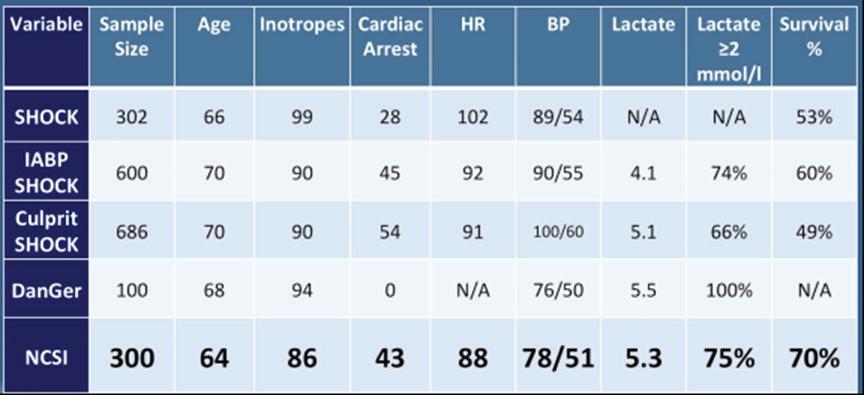
4 minute read
Abstract: Acute Haemodynamic Effects of Venoarterial Extracorporeal Membrane Oxygenation on Left Ventricular Mechano-energetics: The Ramp and Clamp Study
collected from six Yorkshire pigs with coronary artery occlusion. These animals underwent unloading with Impella CP for 2 hours, followed by either consecutive acute reloading and reperfusion or consecutive gradual reloading using Impella-mediated pressure adjustments and reperfusion. Acute study endpoints will assess apoptosis and no-reflow area, whereas chronic study endpoints will include infarct size, LV function and ventricular remodelling.
Dr Mazurek’s abstract presentation was awarded an Acute Cardiac Unloading and REcovery Research Grant.
Advertisement
1. Esposito ML, Zhang Y, Qiao X, et al. Left ventricular unloading before reperfusion promotes functional recovery after acute myocardial infarction. J Am Coll Cardiol 2018;72:501–14. https://doi. org/10.1016/j.jacc.2018.05.034 PMID: 30049311; PMID: 30049311.
Abstract: Acute Haemodynamic Effects of Venoarterial Extracorporeal Membrane Oxygenation on Left Ventricular Mechano-energetics: The Ramp and Clamp Study
Presented by Pankaj Jain, PhD
CardioVascular Center for Research and Innovation, Tufts Medical Center, Boston, MA, US
Dr Pankaj Jain is an Interventional Cardiology Fellow and Research Fellow at the CardioVascular Center for Research and Innovation in the Kapur Laboratory at Tufts Medical Center.
Venoarterial extracorporeal membrane oxygenation (VA-ECMO) is associated with poor short- and long-term outcomes in acute cardiogenic shock (CS) patients, including a low incidence of myocardial recovery.1–3 VA-ECMO causes an acute increase in left ventricular (LV) afterload, reducing forward blood flow, increasing end-diastolic pressure, increasing pressure–volume work and potentiating LV distention.4 Preclinical studies and in silico modelling have provided conflicting findings as to the acute effects of VA-ECMO initiation on ventricular load.5,6 LV unloading prior to VA-ECMO may improve outcomes, but the precise mechanism is unclear.
Dr Jain’s hypothesis is that VA-ECMO impairs native LV myocardial contractility. LV pressure–volume loop measurements were conducted on CS patients undergoing VA-ECMO with or without prior LV unloading. Systemic pulmonary haemodynamics, including LV pressure and volume, were continuously recorded during VA-ECMO initiation, or ramp conditions. Consecutive clamping of the ECMO circuit (clamp conditions) simulated off-pump conditions, and was followed by quantification of end-systolic and end-diastolic pressure–volume relationships.
VA-ECMO induced an acute increase in LV afterload in two patients who experienced ramp and clamp conditions with or without prior Impella LV unloading. VA-ECMO induced an increase in pressure–volume area (PVA) while decreasing LV stroke work, contractility and LV end-diastolic pressure (LVEDP). CLAMP conditions enabled reloading of the right ventricle, but did not restore LV function, as measured by stroke work, indicating LV impairment or a stunning effect. Decreased area of LV pressure–volume loops compared to baseline further suggests that reloading after ECMO reduces LV contractility and causes immediate haemodynamic collapse. As expected, decreased LVEDP, despite increased LV volumes and PVA, indicates that ECMO induced venting, but not unloading, in the patient without Impella, while the patient who received unloading with Impella prior to ECMO displayed decreased LVEDP with marked pressure–volume decoupling, indicative of venting and unloading. Decreased LV elastance and decreased end-diastolic pressure–volume relationship were also observed 12 minutes after ECMO initiation in the patient without unloading, a condition not previously described in humans.
These preliminary data provide the first pressure–volume loop assessment of VA-ECMO activation in humans. VA-ECMO increases ventricular afterload, while altering diastolic ventricular compliance and reducing contractility in CS patients. Transvalvular unloading with Impella prior to VA-ECMO initiation vents or reduces LVEDP, while also unloading or reducing myocardial energy requirements. Future studies include the ECMO ramp and clamp study, a prospective assessment of the acute haemodynamic impact of VA-ECMO with or without LV unloading on LV contractility using pulmonary artery catheters, pressure–volume loops and the Impella SmartAssist console. The acute load imposed by VA-ECMO is anticipated to have an immediate and deleterious effect on LV contractility.
Dr Jain’s abstract presentation was a runner-up for an Acute Cardiac Unloading and REcovery Research Grant.
1. Garan AR, Eckhardt C, Takeda K, et al. Predictors of survival and ability to wean from short-term mechanical circulatory support device following acute myocardial infarction complicated by cardiogenic shock. Eur Heart J Acute Cardiovasc Care 2018;7:755–65. https://doi.org/10.1177/ 2048872617740834; PMID: 29094607. 2. Vallabhajosyula S, Patlolla SH, Dunlay SM, et al. Regional variation in the management and outcomes of acute myocardial infarction with cardiogenic shock in the United States. Circ Heart
Fail 2020;13:e006661. https://doi.org/10.1161/CIRCHEARTFAILURE.119.006661; PMID: 32059628. 3. Schrage B, Becher PM, Bernhardt A, et al. Left ventricular unloading is associated with lower mortality in patients with cardiogenic shock treated with venoarterial extracorporeal membrane
oxygenation circulation: results from an international, multicenter cohort study. Circulation 2020;142:2095–106. https://doi.org/10.1161/CIRCULATIONAHA.120.048792; PMID: 33032450. 4. Bastos MB, Burkhoff D, Maly J, et al. Invasive left ventricle pressure–volume analysis: overview and practical clinical implication. Eur Heart J 2020;41:1286–97. https://doi.org/10.1093/eurheartj/ ehz552; PMID: 31435675. 5. Burkhoff D, Sayer G, Doshi D, Uriel N. Hemodynamics of mechanical circulatory support. J Am
Coll Cardiol 2015;66:2663–74. https://doi.org/10.1016/j.jacc.2015.10.017; PMID: 26670067. 6. Dickstein ML. The Starling relationship and veno-arterial ECMO: ventricular distension explained.
ASAIO J 2018;64:497–501. https://doi.org/10.1097/MAT.0000000000000660; PMID: 29076945.





